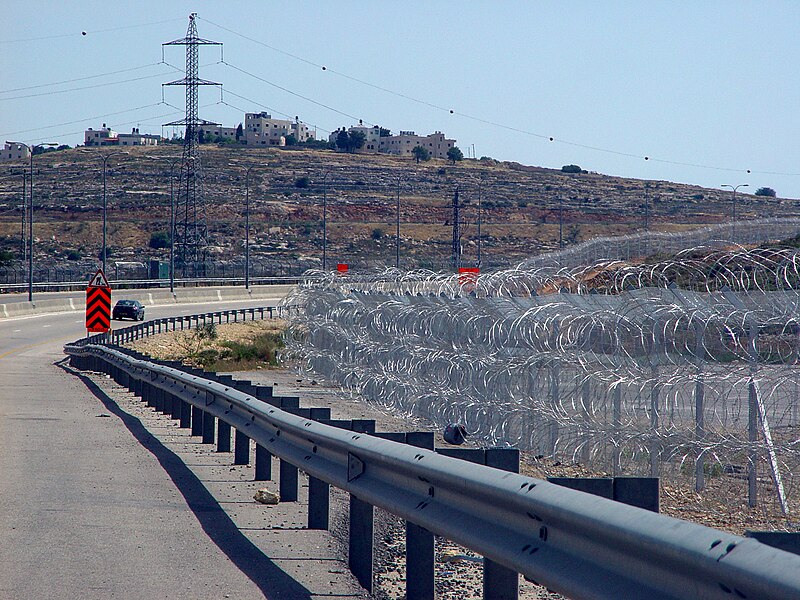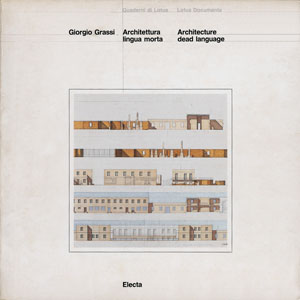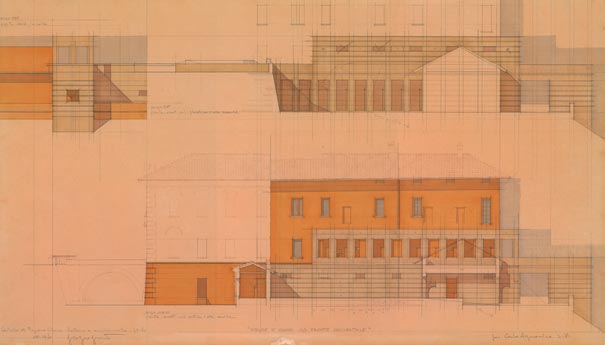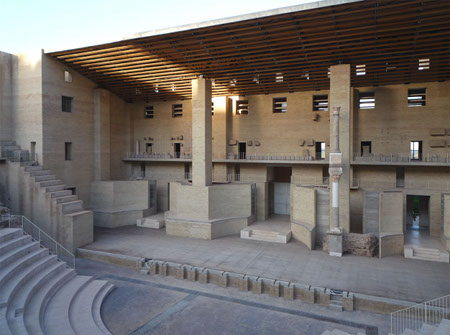Scarpa's projects constitute so many experiments. In them, architectural thinking combines with the acquisition of increasingly refined techniques and distills the secrets of form into design. It is this mixture that is responsible for the fragmentary nature of his achievements, which cannot be fully identified with any of his works, with the exception of the monumental tomb built for the Brion family in the cemetery of San Vito d'Altivole (from 1969 on). Scarpa's designs are, in fact, mostly provisional arrangements and the involuntary memory that emerges in his drawings points continually back to the past. The incompleteness that is the typical mode of his research reveals his concept of the work in relation to time. It thus becomes possible to see the architectural fragment as the favoured embodiment of Scarpa's work and the coherent expression of his rejection of habit.
Right from the start, when Scarpa preferred to "study" with the master glass workers of Murano rather than bow to the restrictions of academic culture, one finds him using drawing and execution as part of the development of experience. The work he achieved up to the start of the '50s reveals the role of visual memory in Scarpa's work. Another comment on Proust could also be revealing here: "For the author who remembers, the main part is not played by what he has seen," affirms Walter Benjamin, "but by the work of remembering, by the Penelope's web of his memory." The results of this tension provide the framework of Scarpa's fragments, which even before being formal events are acts of momentary fixation of experience.
We can imagine the art of seeing which Scarpa came to possess by the end of his apprenticeship, as the result of the intellectual vagabondage that characterized his education. He whiled away the time in gazing, portraying himself through drawing the objectivity of that which he observed. His peculiar formal culture derived from the eye, and by observation he mastered technique. For instance, when he was designing his glass objects in the '30s, he was also observing contemporary figurative works.
This attitude is confirmed by other characteristic features of Scarpa's culture and so by further articulations of his achievement in design. For instance, when he devoted himself to the study of the various techniques of construction - whether in glassware or museum design, in the use of materials or those involved in essential building skills - what seems to have first seized his attention was the creative limitations implicit in them. Hence, in his effort to break through a norm by introducing distortions and even flat contradictions into technical details and constructional solutions, one finds tangible evidence of his rejection of habits and the empty values of utility whose premise they are.
This rejection underlies the special kind of culture of materials Scarpa refined on over the years. His tormented love for the hidden qualities of matter in his buildings developed parallel with attacks on the limitations technical banalization places on use. His desire to question these constraints appears clearly all through his oeuvre, revealing its full coherency in a wide range of achievements. It is articulated in successive phases, in the definition of which the art of seeing develops its own continuous critical commentary on reality. Comment expressed in the language of architectural forms is, indeed, one of the fundamental aims of Scarpa's designs.
Visual comments, going beyond the works exhibited-this is what we find, for instance, in Scarpa's most successful designs of exhibitions. They range from the temporary installations for the exhibitions of Klee (Venice, 1948), Mondrian (Rome, 1956), the room devoted to Antonello da Messina in the exhibition of 15th century Sicilian art (Messina, 1953), down to the museum layouts for the Accademia and the Correr Museum in Venice (1952-56), the Possagno Plastercast Gallery (1956-57), and the Castelvecchio in Verona (1958-64). Scarpa's museums declare even more explicitly than his exhibition mountings the effort he put into shaping materials, light, spatial arrangements and colours as a visual commentary structured around the work of art.
Scarpa's compositions consist of rifts and contrasts - his misgivings over the norm necessarily lead to difference. And difference is the hallmark of a Scarpian fragment. In the detail, deviation takes shape: the viewer's attention focuses on it. The fragment compels a nearer view, it brings the object closer up. This focal reduction appears in the drawings Scarpa scattered over sheets of paper, circling, dismantling and so analyzing the problem he intended to resolve. The horror vacui we find in his papers is the result of a rigid analytical discipline, the only appropriate way to penetrate the subtle form of the fragment.
The Scarpian detail eludes the completeness of any ordering or systematic arrangement. It requires elasticity in composition and excludes general stylistic rules. With regard to the latter question, we need only note Sergio Bettini's observation: Scarpa's "events" speak far more clearly of an absence than of any return to some kind of order. This increases the distance between his works and most of the achievements of modern design.
The withering of standards based on classical rules of composition has given rise to much nostalgia in con-temporary architecture. The uncertainties springing from this seem to be settled when use and function, technology and consumption, reproduction and mass methods, come to be seen as the basic principles for a new system and crystallize into an order of values.
Scarpa displays a substantive indifference towards the 'new" scale of values. The roots of his work pass through the emergent strata of the tradition without being affected by them. He was little involved in the mythologies that determined this tradition. For in-stance, with technology he came to set up what was actually an ironical relationship, when he felt its limits most deeply. Scarpa preferred to play the card of artifice, of the detail, of difference, of the fragment. He saw the norm as an arrest of learning, a manifestation of the laziness of the eye.
The quest for quality is expressed in Scarpa's profound attention detail. Measure and harmony are also attributes of the enigma. As values of order, instead, they appertain to rule, to systematic arrangement, to the "appearances that have encumbered the instant."
It is no accident that Scarpa's drawings made only sparing use of perspective.' Perspective entails a dilation of the horizon within which the formal design is set, and it transforms "... the allusion into a historic representation. History is the final purpose of perspective." Carlo Scarpa's touch makes manifest memory and focuses the gaze: in the detail, he regenerates the space of the moment and the instinctive insight of observation. The quality of the fragment is thus essentially the outcome of discontinuity and not achieved in the modes of perspective arrangement.'
We have already mentioned Scarpa's remarkable sensitivity in handling materials and techniques, but this now calls for deeper study. First, it should be noted that Scarpa's working method can hardly be reduced to the terms of craftsmanship, as this is understood in modern architectural thinking or sociological aesthetology. Scarpa, as has been said, worked slowly. His drawings were the outcome of a vigil rather than drastic depictions of a decision. His continual revisions were so many signals of dissatisfaction rather than progressive stages in an approach to a norm. All this had little in common with the kind of care characteristic of a craftsman at work. If anything, it points to a special experimental concern, but not anything reducible to the confident progress through repeated gestures that characterizes the work of a craftsman. Craftsmanship is based on habit and rule, while Scarpa's procedure tends towards breaking with rules.
Modern architectural culture has exalted and bewailed the lost organic unity of craftsmanship, finding this a justification of its own adherence to the stylistic codes of standardization. Against this Scarpa sets the volatility of his own culture and his sympathy with things; his designs seek to redeem his metier as a state of freedom from time, which might be regarded as primitive if this were sufficient to express its initiatory element. In addition, Scarpa's details are opposed to the banalization imposed on architectural inventiveness by -usability. The reduction of form to mere expression of function, to mere "washability", as Ernst Bloch affirms, is rejected in Scarpa's designs. Scarpa seems to understand that composition does not mean annulling this difference but displaying it. This is true of his use of both materials and technologies, but also of the forms of work that the design employs, stimulating and educating their inner procedures. His designs confronts this gap and emphasizes it. Between design and craft work or manual labour there is a substantive difference, which must not be ignored.
The relation Scarpa establishes with the norm, as we have mentioned, inclines towards excess. This individuates a further gap between his metier, as it has previously been defined, with recourse to a traditional conception, and craftsmanship: The latter has as its horizon the laws of material production and the advantages of usability; its practices tend towards celebration of the values of security, and their horizon is marked by the prevalence of the economic datum. In the metier, instead, expression is given to an element of excess, which tends to call in question the guarantees of making, the certainties of purposes. The unruliness of Scarpa's details interpret this state of affairs: habit is canceled out in the luxurious form of the fragment.'
It would, however, be misleading to confuse the spendthrift fantasy Scarpa expresses in, for instance, the Brion Tomb, with any form of ostentatious display. Excess and waste acquire an allegorical function in the tomb, in relation to both compositional procedures and also to feelings about death.
Lavishness marks out the relationship the architect has created with death, a feeling for which renders each compositional fragment even more complex. This nexus constitutes the premise for the allegorical expressions that the San Vito structure resolves itself into. If discussion of the tendency of Scarpa's details towards transgression has entailed reference to the concept of "luxury," we should note that the life Scarpa gives to the Brion Tomb seems a vibration which could only be reached by 'excess'. The mourning memory that he intends to express is rescued from the funerary norm, and is celebrated in the redundancy of architectural episodes.
Yet it would still be mistaken to speak of the luxury of Scarpa's composition and then content oneself with reflecting exclusively on the material textures of the works. Even more than in the specific handling of constructional materials, where there prevails, rather, a refined coherence of use, Scarpa transgresses against the norm in the ways he juxtaposes them.
In his museum interiors, for instance, his designs make use of the comment unfolded around the historical items, themselves intended, moreover, to become part of the substance of the composition, as happens with the elaborate placing of the statue of Cangrande della Scala in the Castelvecchio Museum. The restructuring of the Olivetti Showroom in Piazza San Marco, Venice (1957-58), or the arrangement of the Luzzato hall in the Querini-Stampalia Foundation are so many demonstrations of the mastery acquired by Scarpa in the eloquent matching of different materials. So great was Scarpa's mastery by this time that he was able to sense the possibility of a symbolical function for certain elements in his compositions - the water that appears in his designs or the handling of chiaroscuro effects -"symbolical" in the topological sense of the term, derived from "sumba/lein", meaning "to combine" or "fuse together".
In the works of his maturity there was to be an even greater concern with detail and the qualities of materials, combined with the identification of archetypal signs and arrangements that were continually being reworked and developed subsequently. The materials of Scarpa's compositions are composite. Among them, an important part is played by those which the "culture of the eye" draws out of the environment. The sensitivity Scarpa shows in his handling of light, which is a true spatial element in a certain number of his works, is the fruit of his Venetian training.
Natural elements seen by Scarpa as materials of composition. It should also be noticed that the use of water in Scarpa's gardens is coupled with labyrinthine forms and rare stone materials. The slender watercourse that wends its way through the garden of the Querini- Stampalia Foundation, for instance, spills over a block of white marble chased with a geometrical pattern.. The combination of water and stone seems to revive one of the most important symbolical associations in Buddhist gardens, where these elements are linked in evoking the mystery of life.
Effects of this kind are not simply derived from refinement of taste. Scarpa's metier meant virtuoso thinking: building was a manifestation of thought, just as form is a way of communicating through sight. Form fixes the instant of seeing and the building gives it the power of resisting time and habit. By virtue and skill the design becomes a revelation of the "thief" in the accomplished instants of detail.
The concept of "decoration" can be associated with a very different order of significance from those commonly ascribed to it by modern formal vocabulary. What has happened is that the tradition's valid principle that nothing is useful unless it is honest ("measured") has been gradually replaced by the conviction that
nothing is honest unless it is useful. This inversion has produced a misunderstanding of the value of ornament. To modern culture and design, decoration and ornament appear as not necessary components of matter revealed, delivered from the indeterminacy of unmeasured quantity. Since "matter" is merely the "material" of a product, the value of ornament is determined by technology, which sees its presence as a system tending to conceal its own intrinsic qualities. The significance of ornament emerges when matter is no longer considered merely as a means, hence a product. The reduction of material to a means is the end result of the "out-reaching hand" of modern technology, in its relation to things and action.
With the creation of the Brion Tomb, Scarpa's struggle against the habits of time completely sheds its makeshift character. The entire project was conceived as an endless work, intended to interpret only the time of maturation of the alchemy, the experiments, the expedients by which the language of its own composition is nurtured. It was no accident that Scarpa desired to be buried here, in this cemetery, near to his own works: only the death of its artificer could have put an end to the building of this autobiographical narrative, treated as a place of enchantments, celebrating in unrepeatable fashion the primacy of the instant, which is the quest of Scarpian composition.













